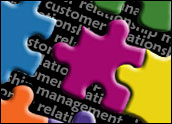
About 51 percent of organizations contacted for a recent study by Nucleus Research and KnowledgeStorm are using at least one on-demand application.
This finding was not surprising to Rebecca Wettemann, Nucleus Research’s vice president, because even though the technology has been around for only a short period of time, “interest in it has exploded,” she told CRM Buyer.
However, the number of organizations now willing to accept on-demand technology and the size of the organizations deploying it are astonishing, Wettemann added.
An Outdated Perception
In fact, the perception that on-demand has primarily been adopted by small companies may well be outdated. Sixty-three percent of companies with more than 1,000 employees had adopted some on-demand technology, compared with only 46 percent of those with fewer than 1,000 employees, according to the study.
“Increasingly, we are seeing large-sized companies willing to consider it,” Wettemann noted. “These firms are recognizing that on-demand enables them to be more flexible and to more rapidly deploy applications that can quickly add value to their operations.”
Large seat on-demand applications have been deployed by Cisco Systems, with 15,000 subscribers. Other firms with large amounts of subscribers include Automatic Data Processing (6,700), Nokia (5,500), Sprint Nextel (5,100), Merrill Lynch (5,200) and Corporate Express (5,000).
Leading the Pack
These were deployments by Salesforce.com, the leading company in this space.
“Enterprises are clearly drawn to the on-demand model,” Bruce Francis, Salesforce.com’s vice president of corporate strategy, told CRM Buyer.
“This isn’t just our opinion. Enterprise adoption is gaining traction, and [it] is really expected to take off in the coming years,” he continued. “Look at recent reports from Triple Tree, McKinsey and Gartner.”
The Reasoning
There are a number of reasons why enterprises are beginning to embrace on-demand now.
Typically large enterprises try out on-demand on a small scale, and then expand its use further into the enterprise once they are satisfied with its performance, said Gil Ben-Dov, senior vice president of sales and marketing at Market2Lead, a provider of demand generation solutions.
“Originally, on-demand CRM was sold to the division or group level, not the full enterprise accounts,” Ben-Dov told CRM Buyer.
“With the success of these divisional on-demand deployments, many companies are experiencing multiple divisions and groups using the same solution, and they are demanding single tenants — hence the growth in larger deals,” he commented.
These larger deployments are more indicative of the demand for SaaS (software as a service) than they are for on-premise applications, Ben-Dov stated.
“In the on-premise world, the software and implementation costs did not grow in direct proportion to the number of seats. … More seats meant a lower cost-per-seat, and implementation expense is relatively fixed — which led to many large scale deployments in an attempt to minimize cost-per-user, all negotiated at the start,” he said.
Past Performance
Indeed, growth by past performance is how Salesforce.com in many situations picked up large-scale deployments.
“We typically [would] come on board in the sales department, and management [would take] notice of the high adoption and greater visibility,” Salesforce.com’s Francis noted. “Then, we might help them succeed in service and support or marketing.”
The introduction of AppExchange is accelerating that process, he commented, adding that it offers “over 500 apps and components to extend that success to areas like HR, recruiting and many others.”
Ben-Dov also pointed to the advent of exchanges, citing Salesforce.com and SugarCRM as examples.
These “let users pick from many other partner software options, effectively ‘dismantling’ the platform play that has been the main stay of the on-premise sales pitch. Suddenly, you can go end to end via multiple ‘best-in-class’ vendors without buying your own system integration firm to manage it all,” he noted.
Unifying Operations
There are other drivers behind the move to large-seat deployments. Some firms with geographically diverse operations prefer the Internet delivery model as a way to unify operations, stated Art Papas, CEO and cofounder of Bullhorn, an on-demand CRM vendor for the staffing and recruiting industry.
“Our larger clients in the staffing and recruiting industry choose Bullhorn’s On Demand integrated front office software because it allows them to centralize recruiting and sales information that is dispersed among numerous regional office locations,” he told CRM Buyer.
“For example, Sapphire Technologies, one of the most extensive IT staffing companies in the U.S. and part of the Vedior Group of companies, uses Bullhorn to consolidate the information from more than 40 offices and corresponding databases,” Papas added.
Overcoming Challenges
Another reason why deployment seat numbers are rising is that on-demand firms are overcoming the marketing challenges that accompany these deals, noted Treb Ryan, CEO of OpSource, which specializes in on-demand software delivery.
There are different challenges to selling large seat deployments — the largest being that as much as 75 percent of the sale is about IT issues, not application issues, Ryan told CRM Buyer.
“SaaS companies can get really tripped up answering questions about, for instance, cable rotation policies,” he stated.
























































